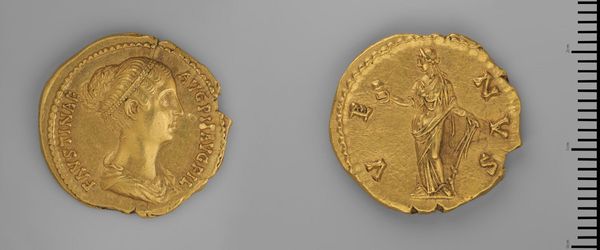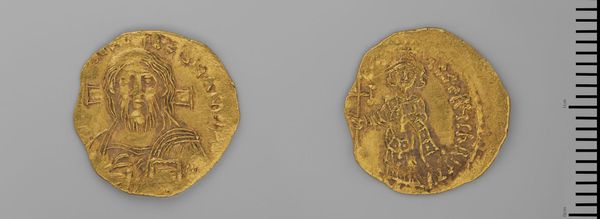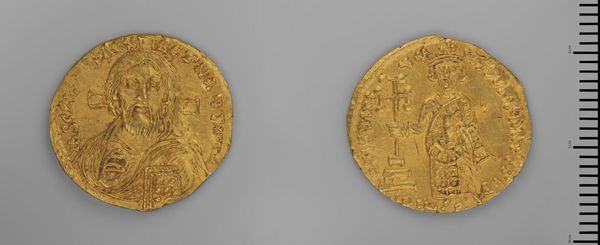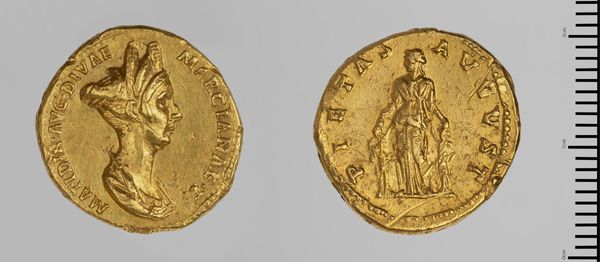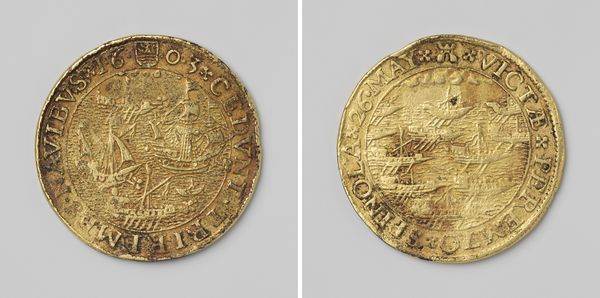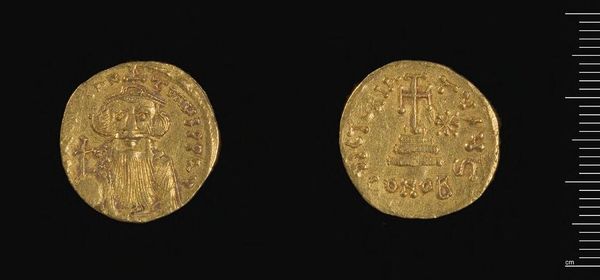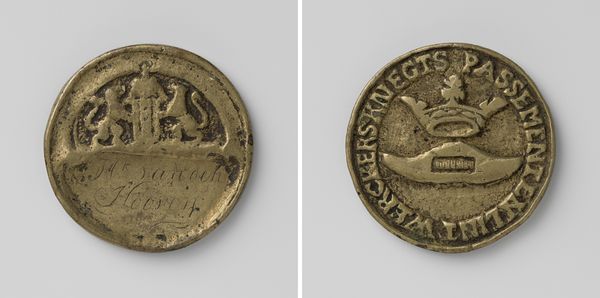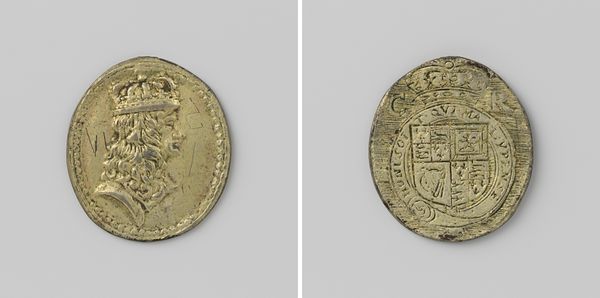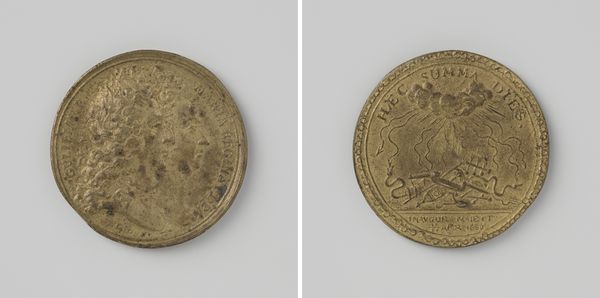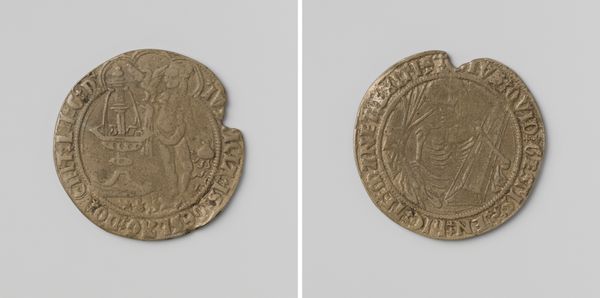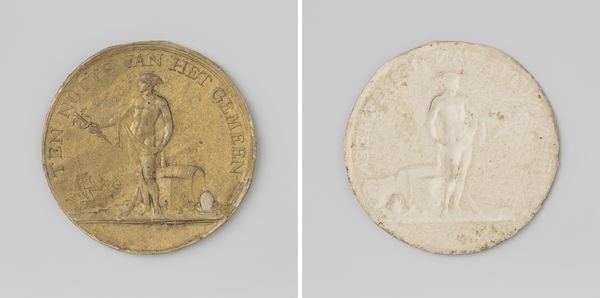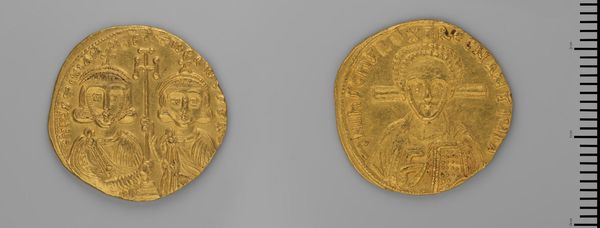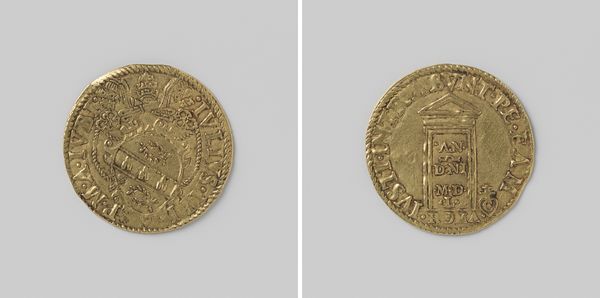
Dimensions: 7.11 g
Copyright: CC0 1.0
Curator: The Harvard Art Museums hold this stunning gold coin, an aureus of L. Aelius Caesar. Editor: It's immediately striking how much symbolic weight is packed into such a small, glimmering object. Curator: Indeed. Coins served as powerful propaganda tools in ancient Rome. This one features Aelius Caesar, Hadrian's intended successor, and would have circulated widely. Editor: The image of Concordia, seated and holding a patera, speaks volumes about the desired harmony and stability of the state. It's a carefully constructed visual message. Curator: Absolutely. The depiction of Concordia was intended to associate Aelius with peace and unity, crucial for legitimizing his claim to power. Editor: The gold itself is important, isn't it? It suggests power and authority. The coin feels like a condensed symbol of the entire Roman system. Curator: Precisely. It’s a small object carrying the weight of imperial ambition and the projected values of a society. Editor: Thinking about the coin's imagery has made me more aware of how valuable the object is. Curator: Yes, its value extends far beyond its weight in gold; it is an artifact that tells us about the social and political climate of ancient Rome.
Comments
No comments
Be the first to comment and join the conversation on the ultimate creative platform.
